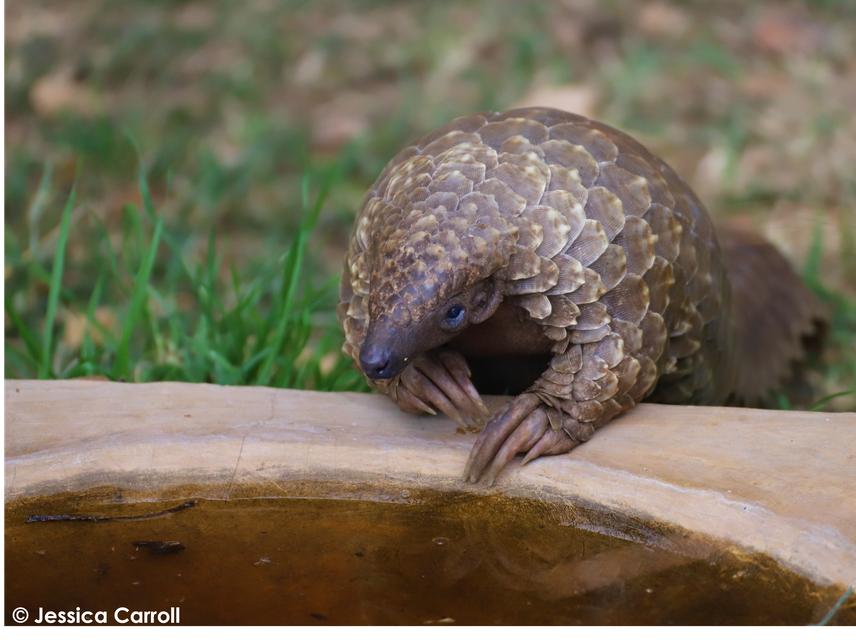Jessica Harvey-Carroll
Other projects
8 Apr 2022
Quantifying Post-Release Behaviour and Survival of Trafficked Temminck’s Pangolins
Pangolins are the most heavily trafficked mammals globally and are at risk of extinction due to overharvesting and illegal wildlife trade. Conservation efforts increasingly rely on the rescue, rehabilitation, and release of trafficked individuals, yet significant knowledge gaps remain regarding pangolin behaviour, habitat requirements, and post-release outcomes. This project (Rufford small grant 2, RSG-S2) builds upon research conducted in the Rufford small grant 1 (RSG-S1), which successfully validated a novel, non-invasive method for monitoring ground pangolin (Smutsia temminckii) behaviour using accelerometers. RSG-S2 will increase behavioural monitoring efforts of ground pangolin, and also apply the novel methodology to an endangered and poorly studied species—white-bellied (Manis tricuspis) tree pangolins.

A ground pangolin having a 'mud bath'. © Jessica Carroll.
The study is structured around three work packages. WP1 will increase accelerometer deployments in Gonarezhou National Park, Zimbabwe, ensuring representation across sex and rehabilitation status. Additionally, accelerometers will be validated in tree pangolins at the Tikki Hywood Foundation (THF) rehabilitation centre in Cameroon, with pilot deployments on released individuals. These data will provide novel insights into seasonal behaviour, space use, and the effects of tail amputation—common in rescued tree pangolins—on post-release survival.
In WP2, accelerometer and GPS data will be analysed to compare the behavioural ecology of rehabilitated versus wild individuals. Specific objectives include determining differences in space use, daily and seasonal activity patterns, and habitat preferences. This will enable the creation of habitat suitability and distribution maps, guiding selection of release sites and identifying key pangolin conservation areas within national parks.
WP3 will translate findings into practical conservation outcomes. Recommendations will be developed to refine release protocols, aiding integration of rehabilitated pangolins into wild populations. These guidelines will be shared with key stakeholders and the wider scientific community to inform best practices across the pangolin conservation network. RSG-S2 will generate critical ecological knowledge and maximize the effectiveness of conservation efforts for pangolins.